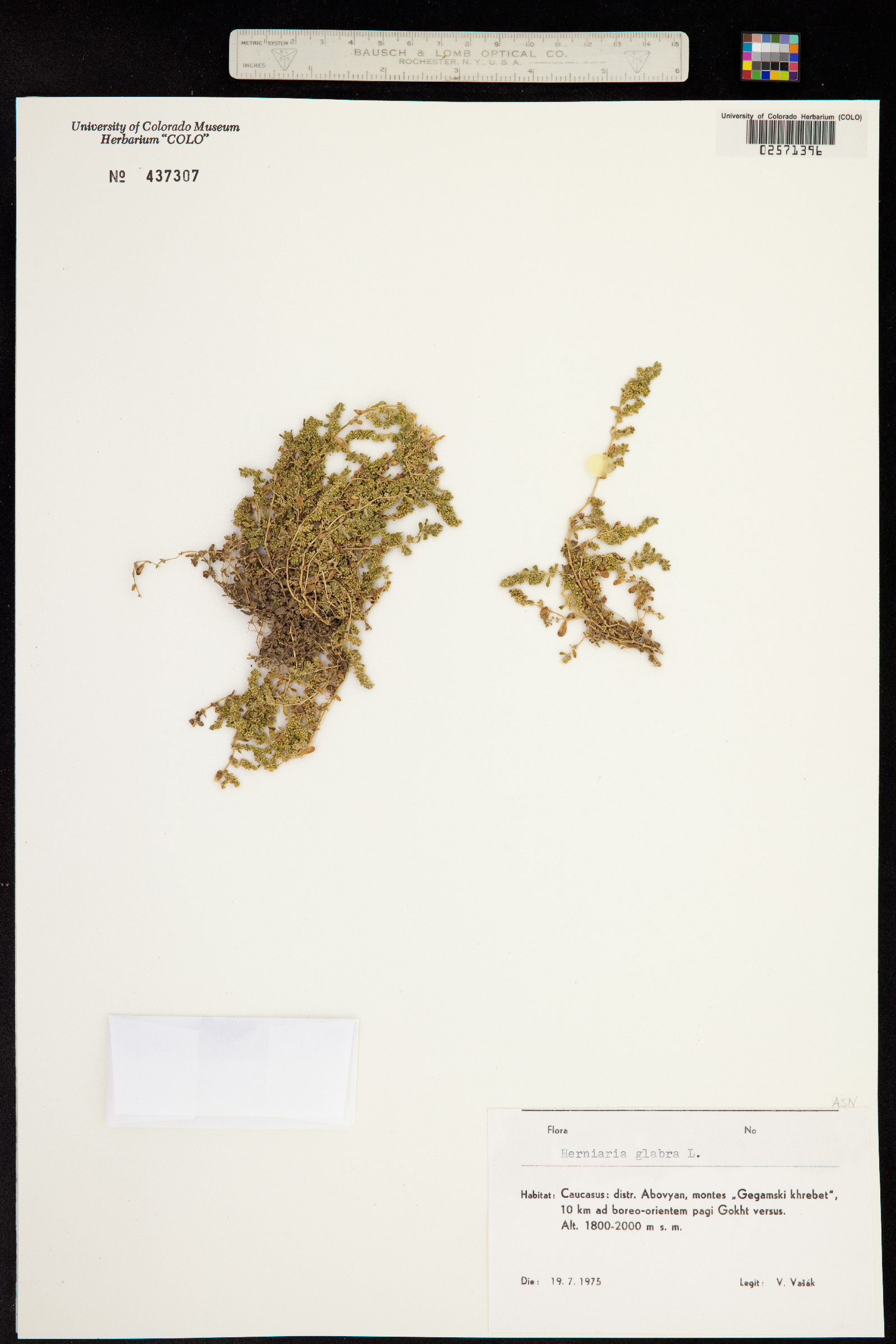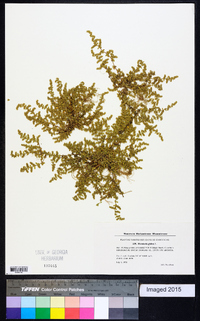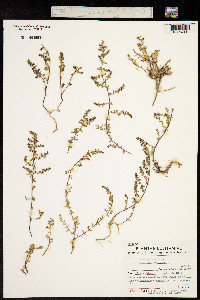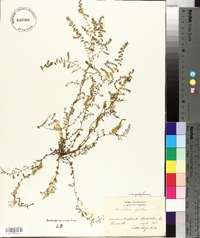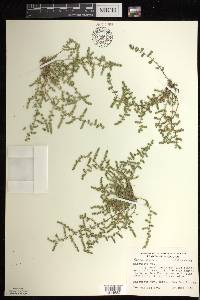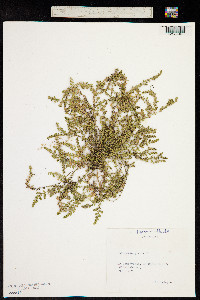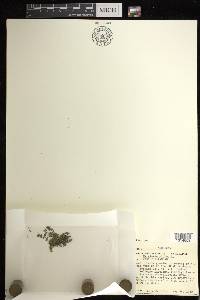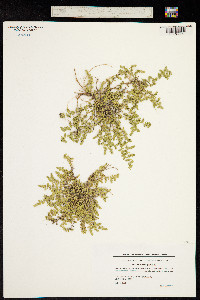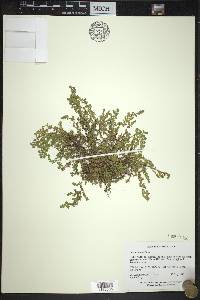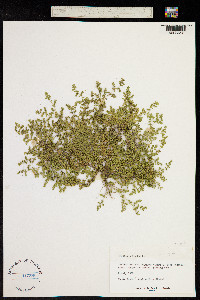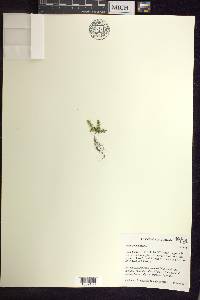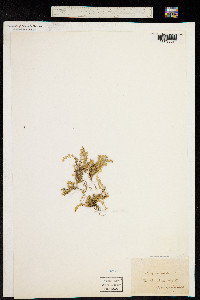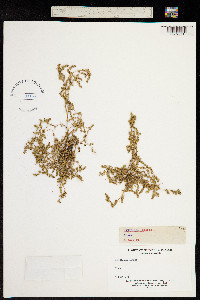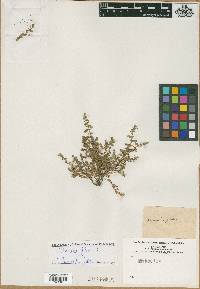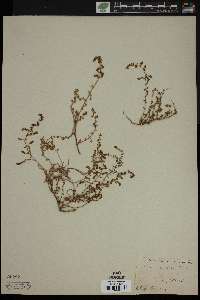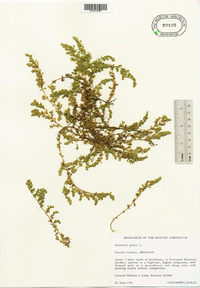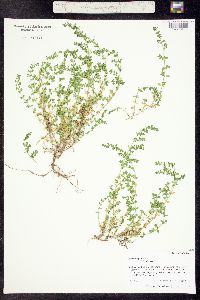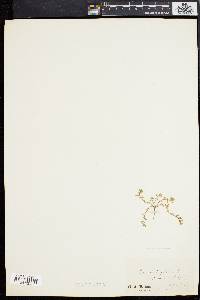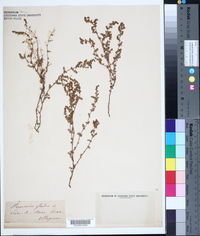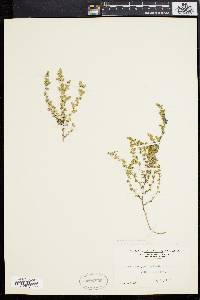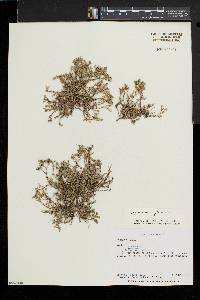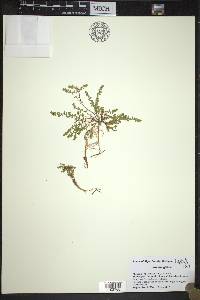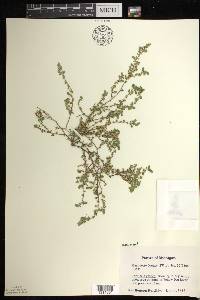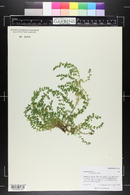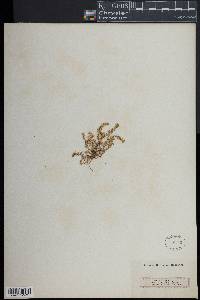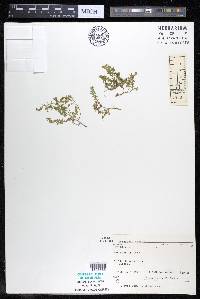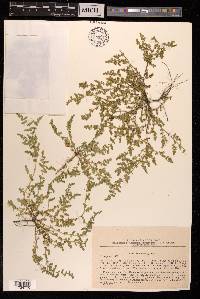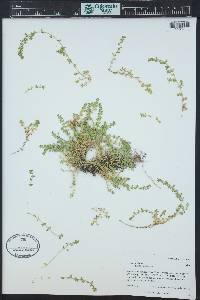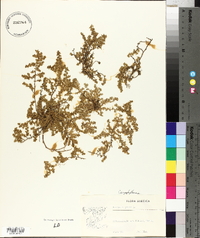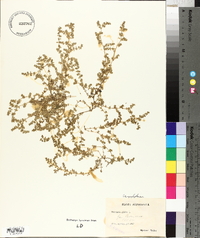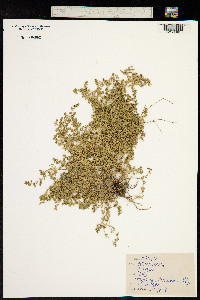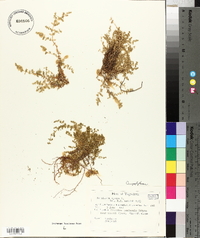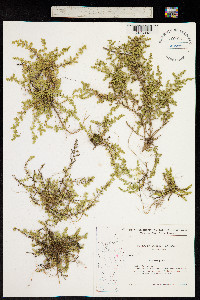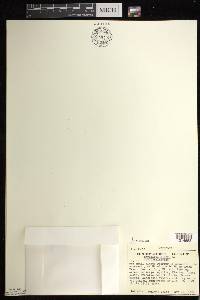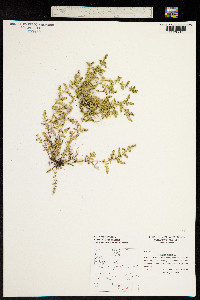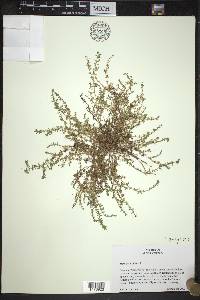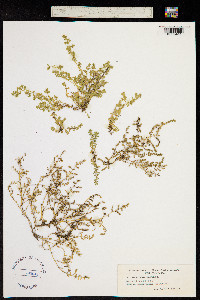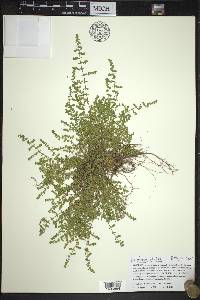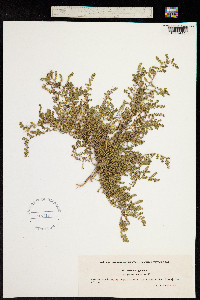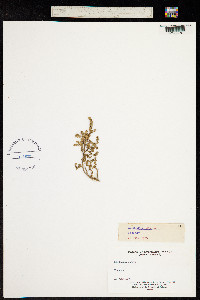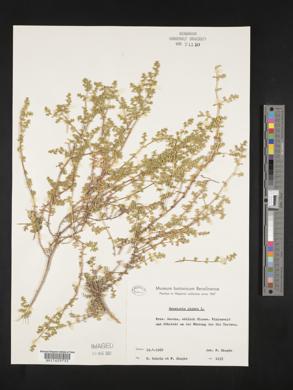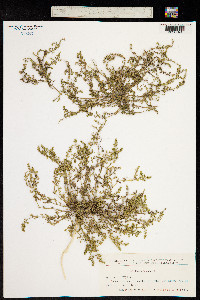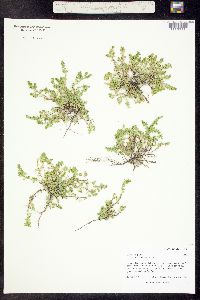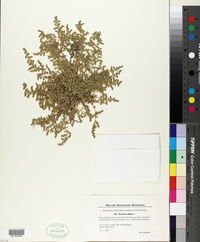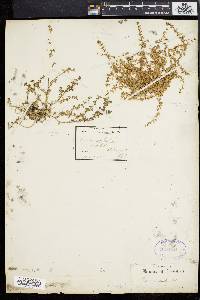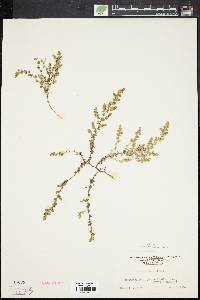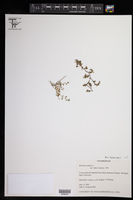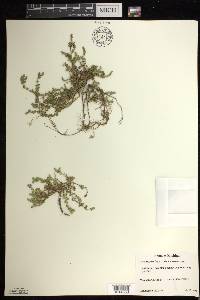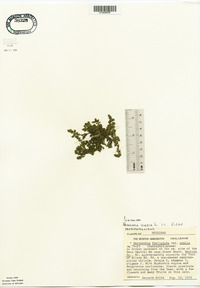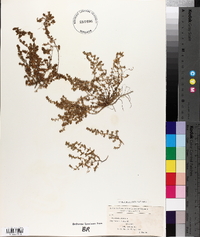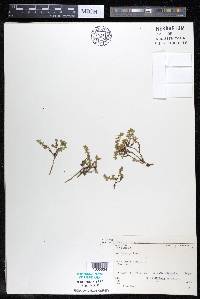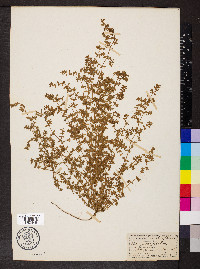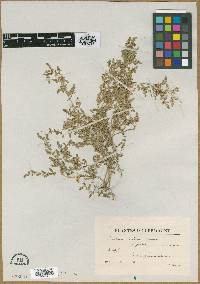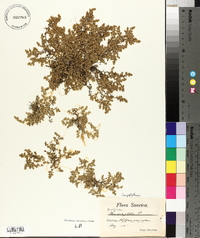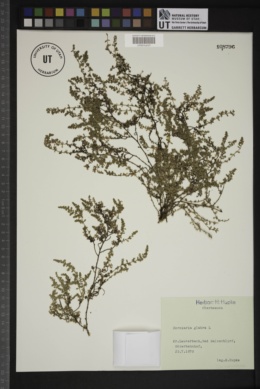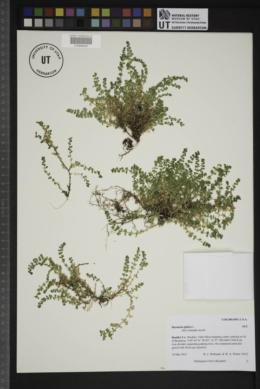Herniaria glabra
|
|
|
|
Family: Caryophyllaceae
Smooth Rupturewort
[Herniaria ceretana Sennen] |
Plants annual, biennial, or perennial, light to yellowish green, glabrous or puberulent, some-times with woody caudex. Stems spreading to prostrate, 5-35 cm. Leaves opposite, or distalmost alternate; stipules 0.5-1.5 mm; blade obovate-elliptic to sub-orbiculate, 3-7(-10) mm, glabrous or sometimes short-ciliate. Inflorescences mostly leaf-opposed, 6-10-flowered. Flowers 1-1.5 (-1.8) mm, usually glabrous or sometimes short-ciliate; calyx not burlike; sepals equal or sometimes unequal, 0.5-0.6 mm, glabrous; stamens 5; staminodes petaloid, 0.5 mm; styles connate in proximal 1/ 3. Utricles 1-1.3 mm, usually longer than sepals. 2n = 18, 36, 72 (Europe), 54 (Africa). Flowering spring-summer. Roadsides, dry or rocky, sandy places; 0-1200 m; introduced; Ont., Que.; Md., Mich., N.J., Pa., Utah; Europe; Asia (Turkey); introduced elsewhere. Historical collections are known also from Maine (1903) and New York (1943). Herniaria glabra, variable in habit, vestiture, flower size, and fruit length (H. W. Pugsley 1930), has been reported to hybridize naturally with H. hirsuta (M. N. Chaudhri 1968). It makes a dense mat of foliage, being occasionally planted as a ground or grave cover.
Annual, biennial, or perennial herb with a slender taproot, mat-forming 5 - 35 cm tall Stem: spreading to prostrate, much-branched at the base, sometimes minutely hairy. Leaves: opposite (sometimes upper leaves are alternate), numerous, stalkless or nearly so, 2 - 7 mm long, to 3 mm wide, reverse egg-shaped to elliptic to nearly circular, one-veined. Inflorescence: a leaf-opposite, dense cluster (cyme) of six to ten flowers subtended by paired bracts. Flowers: four- to five-parted, stalkless, green, 0.5 - 1.5 mm long, cup-shaped, usually hairless. Stamens two to five. Staminodes (sterile stamens) four to six. Stigmas two. Sepals: five, distinct, about 0.5 mm long, equal or sometimes unequal. Fruit: bladder-like, one-seeded (utricle), about 1 mm long, usually longer than the sepals, opening irregularly. Similar species: No information at this time. Flowering: late May to mid-August Habitat and ecology: Introduced from Eurasia. Rare in the Chicago Region, and was unknown in the wild here until 1979 when it was found growing in broken pavement. Occurence in the Chicago region: non-native Etymology: Herniaria comes from the Latin word hernia, meaning "to rupture," referring to this plant's once supposed treatment of hernias. Glabra means smooth (without hair). Author: The Morton Arboretum Freely branched, mat-forming, subglabrous annual or perennial; lvs numerous, subsessile, 2-6 נ1-3 mm or some smaller; interpetiolar stipules 0.5-1 mm; fls congested in small cymose axillary (or seemingly lf-opposed) clusters (the clusters sometimes forming short axillary branches), 4-5-parted, 0.5-1 mm; stamens 2-5; staminodes 4-6; 2n=18. Native of Europe, casually intr. here and there in our range. Gleason, Henry A. & Cronquist, Arthur J. 1991. Manual of vascular plants of northeastern United States and adjacent Canada. lxxv + 910 pp. ©The New York Botanical Garden. All rights reserved. Used by permission. |

